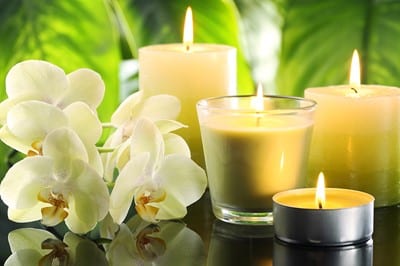
You may be reading this because you are interested in making your own candles. Where should I start? What should I prepare? These may just be some of the things that you have in mind right now. Aside from preparing the supplies and materials that you would need, one of the most important factors that you can take into consideration is choosing the type of wax that is best for making high-quality candles.
Types of Wax
When it comes to making your own candles, there are a number of options on wax for you to choose from:
- Paraffin Wax

Paraffin wax is often referred to as straight wax. This type of wax is the more ‘standard’ one, as it does not contain any additive at all. They are also considered as the least expensive and the most commonly used candle wax out there. Paraffin wax may be used in making different types of candles, such as containers, pillars, votives, tapers, tealights, and tarts.
- Granulated Wax

This type of wax is usually used for making candle making crafts, thanks to its ease of use. In fact, there is no need for you to melt granulated wax, which is made using melt-point paraffin (at 140 degrees), which has been molded into little beads. All you need to do is to pour out granulated wax to a container, inserting a wick, and you have a candle for yourself.
- Palm Wax
Palm wax is an all-natural wax, making it 100% safe. It is created by hydrogenating palm oils. Using this type of wax enables you to make candles that feature unique textures. In most cases, crystallizing or feathering patterns are available, forming on the surface of the candle. Using palm wax is a good choice if you are planning to make tarts, votives, and pillars.
- Soy Wax
Soy wax, or soy wax flakes, is made out of 100% all-natural wax from hydrogenated soybean oil. It is recommended if you are planning to create container candles, as well as tins, jarred, tealights, votives, and tart candles. Since soy wax and paraffin wax candles are different when it comes to performance and appearance, you certainly would want to learn about the features and properties of each type of wax in order to decide better as to which kind of wax you would like to use.
- Beeswax
Beeswax is also a 100% all-natural wax and is often regarded as one of the best types of waxes out there. They are also ideal in making all types of candles, such as votives, tapers, pillars, and containers. They also come in the form of sheets.
- Custom Blends
If you are not up for testing blends and other additives by yourself, custom blends are your perfect option. They also offer an easier way of creating your own candles. There are different brands offering proprietary blends that are formulated well and do not require additives aside from UV light stabilizers, which are helpful enough to avoid fading. There are various blends for different types of candles.
- Gel Candle Wax
Another type of wax that definitely deserves a spot in this list is a gel candle wax. In reality, it is not really completely wax. It offers a translucence type of gelatin made out of mineral oil, along with polymer resin. By using a gel candle wax poured into a transparent glass container, you can easily make beautiful clear container candles. For extra beauty and interest, you can make your very own decorative candles with gel candle waxes.
The Right Wax for Different Candles
It is important to choose the wax that suits the type of candle that you would like to make. Container candles, for example, are those that sit inside of a jar, usually glass, tin, or other container types. Since they do not really stand on their own, different types of waxes may be used, including paraffin wax, soy, palm, and beeswax.
Votives are smaller candles designed for the glass, small containers. Since they are also not freestanding, different types of waxes can be used to make these votives, such as natural, soft waxes including palm, soy, wax blends, beeswax, and paraffin.
There are also tealight and taper candles. Tealight is designed to sit in cylindrical and small metal or a transparent plastic container. Tealights can use most types of waxes, including palm, soy, beeswax, paraffin and soy blends, and pure soy. Tapered candles are narrow and long, sitting in candlesticks. Beeswax and paraffin are the best options on waxes for taper candles.
Conclusion
Every type of wax included in this list offers particular benefits. Note that not all types of waxes may be used in order to create all types of candles. This means that you need to do your homework in learning more about the best type of wax that will fit right in to your next candle making project.

